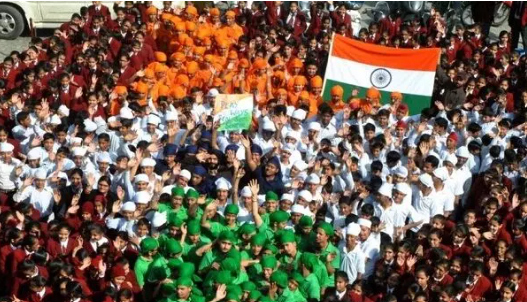Bharat as a soft power: Cultural Renascence through Ram mandir: Dr. Jury Sharma Bordoloi
- statetodaytv

- Feb 16, 2024
- 3 min read

Shri Ram symbolizes Maryada Purushottam, a phrase in Sanskrit where ‘Maryada’ means ‘honour and righteousness’, and ‘Purushottam’ means ‘the greater than the greatest man’. Lord Ram was an incarnation of lord Vishnu and has been a embodiment of perfection and inspiration of morality in context to Social, political, religious and of culture and tradition in a around Indian Sub-continent. The society where “Ram Nam” has been a part and parcel of every citizen, from morning wishes to the funeral journey, it is obvious that the Ram Mandir holds immense significance in day-to-day life and therefore Shri Ram is respected and worshiped in Hinduism
The newly constructed Ram Mandir in Ayodhya is considered as a symbol of religious and cultural identity, of devotion and veneration for Millions of Hindus residing all over the world, symbolizing their Spiritual beliefs and cultural heritage. This also signifies the end of a decades-long socio-political struggle and a resolution to litigious issue that has otherwise been a focal point in Indian history for almost a century. The construction of this temple symbolizes unity, peace and harmony thus promoting a sense of reconciliation among various segments of society.
This Ram Mandir also symbolizes a cultural, religious, political, and socio-economic significance for Bharat. It is serving as a persuasive symbol of collective heritage, faith and integrity which is very significant in establishing Bharat into one nation that is having a huge diversity and which has always overcome the socio-economic, cultural, religious and political realm that has been carrying a deep rooted legacy embedded in the country’s History.
Bharat and the entire South Asian subcontinent have shared a common historical origin along with its culture, tradition and social values for thousands of years. The Ram Mandir holds the capacity to redefine these aspects and the regional political equations as well. Traditionally, inclusiveness and acceptance (the basic character of Indian civilization) has been playing a vital role in bridging the political gap among the different nations, religions, cultures and tradition from across the world which makes Bharat, altogether a different state where religious pluralism is ensured and promoted.

Ram Mandir represents a collective sentiment of faith and spirituality shared by a vast section of the Bharatwasi, thereby contributing to a sense of uniformity and shared heritage. The construction of Ram Mandir can be considered as a calculated move to emphasize Bharat’s soft power, with a capacity to influence any other country through allure and persuasion rather than oppression. It is displaying Bharat’s rich heritage, traditional, cultural and lingual diversity, in order to attract the people from across the world and creating a positive image that can surpasses the dominions of politics. This grand temple, dedicated to Shri Ram can be considered as an expression of Bharat’s soft power in manifestation nationally and internationally.
In such a situation the importance of the Ram Mandir goes beyond the regional boundaries, entering the international arena. As the nations across the world are redefining their cultural and traditional narratives, this temple will become a symbol of love, trust, universal brotherhood and all the good human quality that echoes with the people globally. The basic character of inclusivity in Indian Culture will definitely can foster a more corroborative environment, reducing regional tension and promoting stability in this volatile region (The South Asian Subcontinent).
■Dr. Jury Sharma Bordoloi
Spokesperson, BJP Assam Pradesh




32win là nơi kết hợp giữa giải trí và công nghệ với hàng loạt game đa dạng, nhiều chương trình khuyến mãi và giao diện thân thiện, bạn có thể chơi tại 32win io.
UU88 – nơi cá cược trở nên đơn giản, hấp dẫn và dễ trúng. Giao dịch chỉ vài phút, game đồ họa đẹp, quà tặng bất tận. Chơi ngay để không bỏ lỡ phần thưởng lớn!
TA88 giúp bạn vừa giải trí vừa có cơ hội kiếm thưởng mỗi ngày nhờ hệ thống game phong phú và ưu đãi cực khủng tại https://reebokoutlet.us.com/
Không phải ngẫu nhiên 23win lại viral năm 2025. Nền tảng này được hỗ trợ bởi 23winn digital, mang đến sự ổn định, tốc độ và dịch vụ cá cược cực kỳ chuyên nghiệp.
23Win – Cổng game cá cược trực tuyến hàng đầu với hàng loạt sản phẩm hấp dẫn. Tham gia ngay tại https://23win.finance/ để nhận ưu đãi và trải nghiệm không giới hạn.